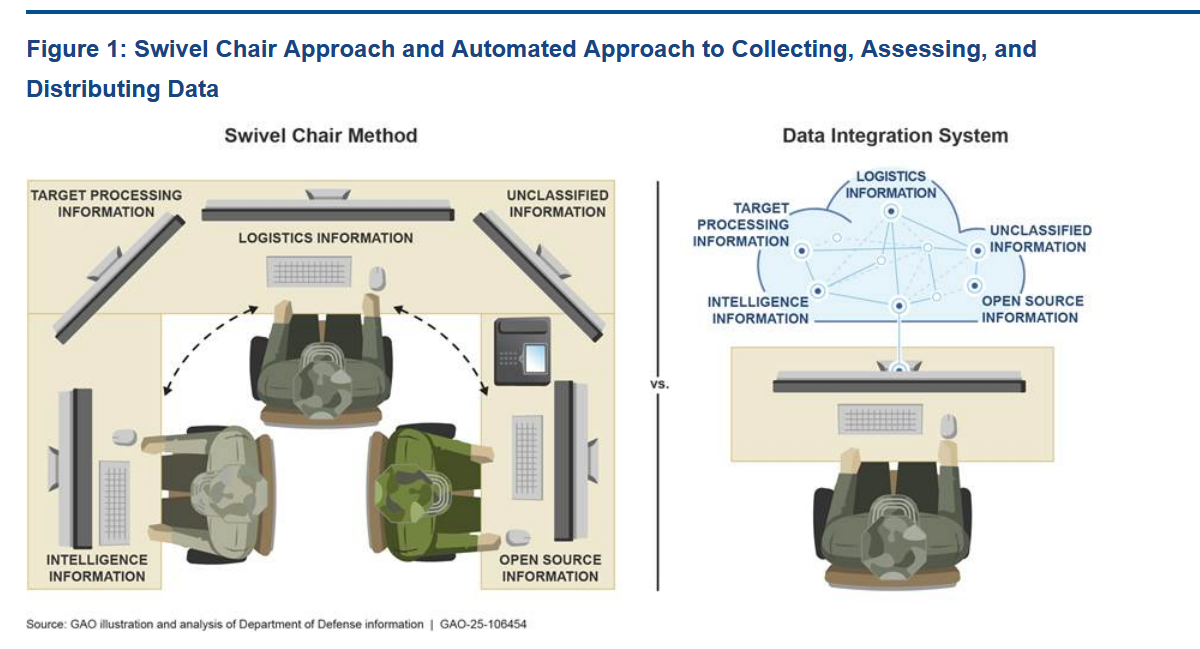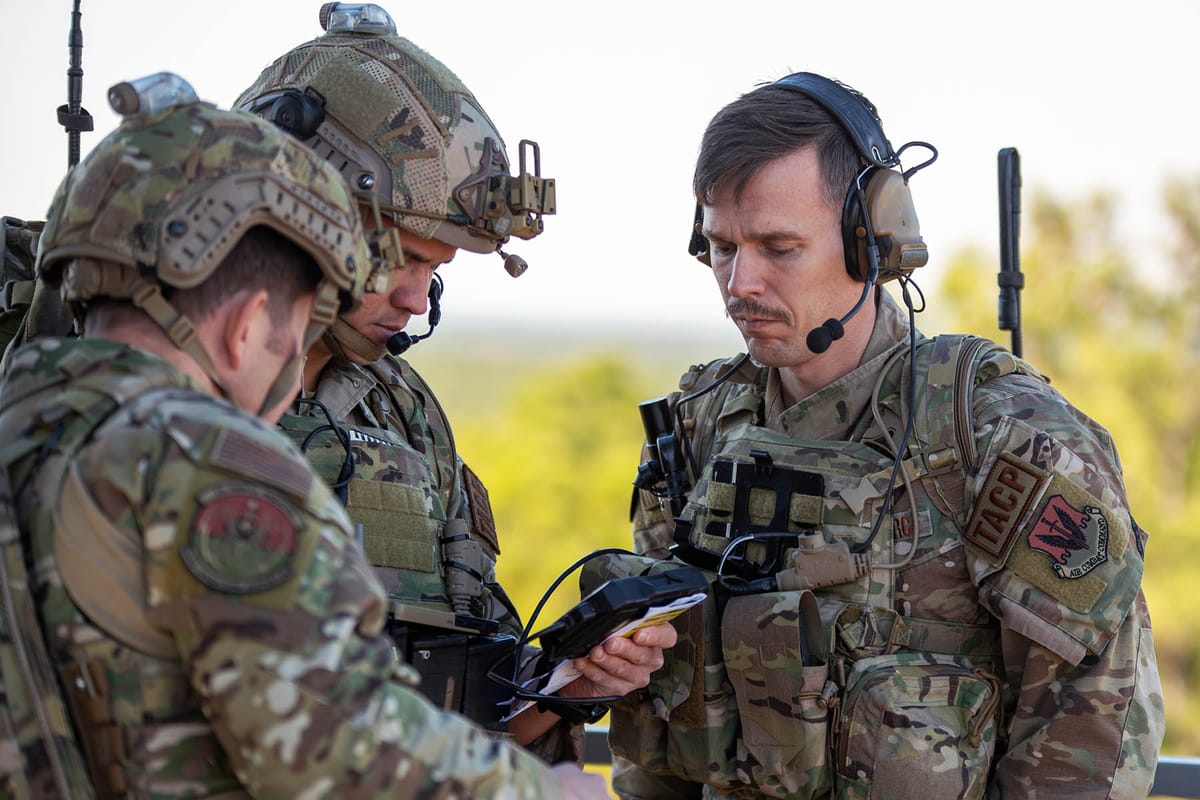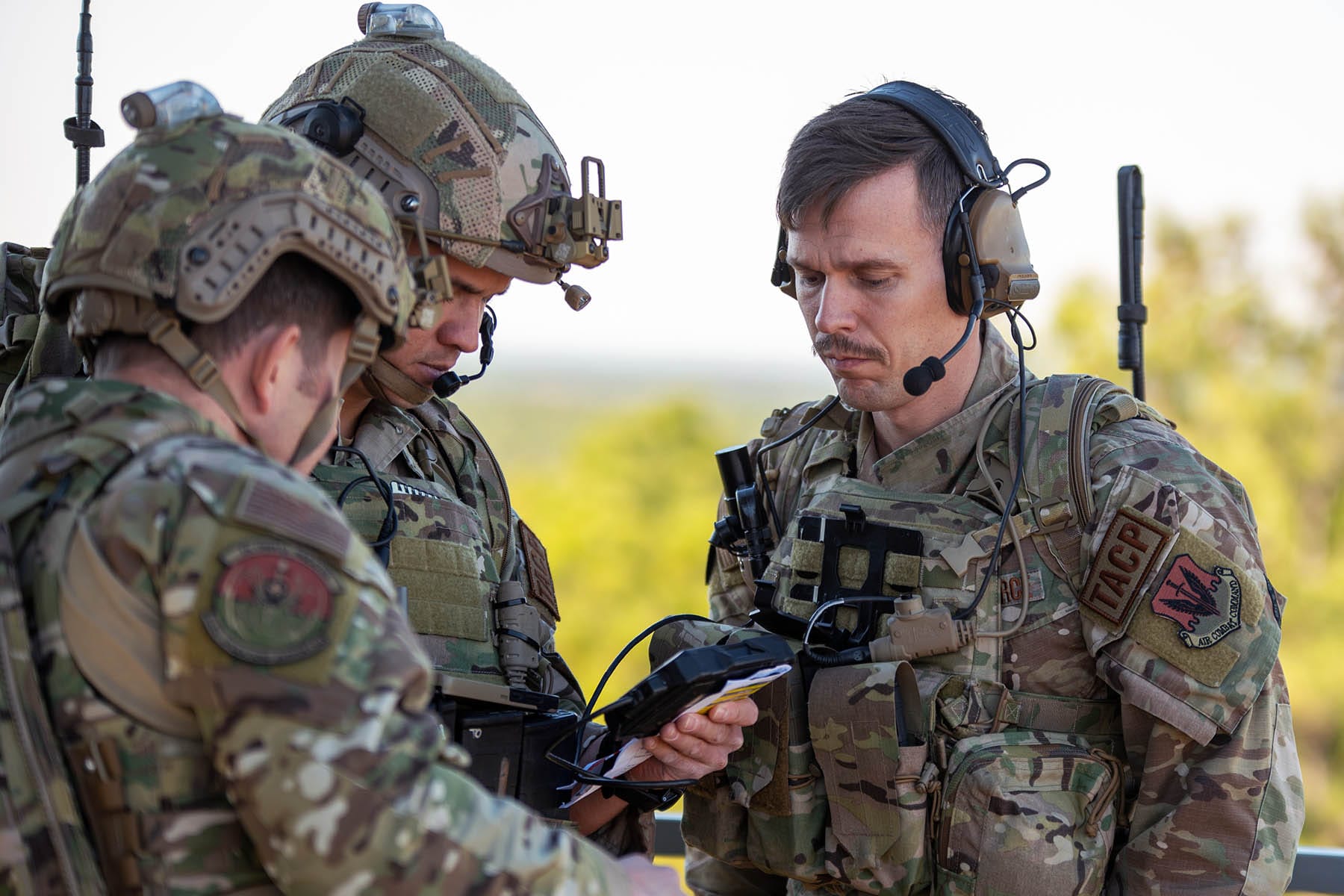The U.S. Army told the government it had a lot of success using AI to “process targets” during a recent deployment. It said that it had used AI systems to identify targets at a rate of 55 per day but could get that number up to 5,000 a day with “advanced artificial intelligence tools in the future.”
The line comes from a new report from the Government Accountability Office—a nonpartisan watchdog group that investigates the federal government. The report is titled “Defense Command and Control” and is, in part, about the Pentagon’s recent push to integrate AI systems into its workflow.
Across the government, and especially in the military, there has been a push to add or incorporate AI into various systems. The pitch here is that AI systems would help the Pentagon ID targets on the battlefield and allow those systems to help determine who lives and who dies. The Ukrainian and Israeli military are already using similar systems but the practice is fraught and controversial.
AI systems hallucinate and make incorrect determinations. Facial recognition software often sends false positives and in war that can mean the difference between life and death. This is one of the scenarios that people who’ve warned about the advent of “killer robots” are worried about.In the U.S, attempts to incorporate AI into the military have had mixed results. But the GAO pointed to an interview with XVIII Airborne Corps officials as an example of success. XVIII a large corps with divisions that fight wars but also do intelligence gathering, disaster relief, and support for Special Operations. The 101st Airborne, of Band of Brothers fame, is one of its divisions.
One of XVIII’s ongoing projects is a recurring exercise called “Scarlet Dragon.” The goal of Scarlet Dragon is to improve the military’s use of AI and other data-centric systems. It’s a military hackathon where soldiers develop and use software and write the code it hopes to use in tomorrow’s wars. During an event in 2020, XVIII developed an AI-driven software suite that the Missile Defense Agency now uses to pick targets out of the sky. It used to take 12 hours. Now they claim to do it in under a minute.
According to the GAO’s report, XVIII officials said that advanced AI systems are key to the Pentagon’s future. “Scarlet Dragon…has yielded positive measurable results, particularly in target identification and validation and software efficiency,” the report said.
“XVIII Airborne officials reported that during a recent deployment they developed 62 software updates in a 10-month period, resulting in a 600 percent improvement in software efficiency,” it said. “Additionally, members of the XVIII Airborne Corps targeting team processed 55 targets per day in support of a contingency operation but officials told us that they believe that number could grow to 5,000 targets per day using advanced artificial intelligence tools in the future.”
“Contingency operation” can mean anything from disaster relief to fighting terrorists. The report didn’t detail the deployment or specific contingency operation where XVIII developed its AI systems and XVIII told 404 Media that “operational security concerns preclude” it from answering. But the members of the XVIII did spend nine months in Europe training and equipping Ukrainian soldiers a few years ago. It was also part of disaster relief efforts after Hurricane Helene hit the Carolinas.
Using AI for “target identification and validation” is similar to how the Israel Defense Forces are using Microsoft’s Azure AI in its wars in Lebanon and Gaza. According to reporting from the Associated Press, the IDF feeds data into Microsoft’s cloud systems and uses it to process data and help it pick targets in the field. Palantir is doing something similar in Ukraine. The GAO report did not specify which AI software systems XVIII used.
The systems aren’t flawless. The AP detailed how an AI system in Israel mistranslated the Arabic word “payment” as the word for the grip of an RPG and added someone to a target list. In that specific instance, an intelligence officer caught the AI’s mistake. But humans don’t catch every mistake and the IDF said that it has used AI in every strike it’s conducted in the last three years. Those strikes have killed tens of thousands of innocent people, including children. A report by 972 Magazine details how the IDF’s AI targeting systems essentially allowed the army to fast track and rubber stamp bombings that they knew would result in civilian casualties.
The GAO report is part of an investigation into a 2019 Pentagon initiative called the Combined Joint All-Domain Command and Control (CJADC2). The goal of the project is to speed up decision making by giving soldiers and leaders information faster. The GAO report used a swivel chair as a metaphor for what CJADC2 is trying to accomplish.
In the current system, the Pentagon is like a soldier sitting at a desk with three sides. There are five monitors on the desk attached to five separate computers. To run the military, the Pentagon is constantly swinging back and forth in the swivel chair. In the future it wants the chair placed in front of one monitor that’s feeding it all the information, metaphorically speaking.
 IMAGE: GAO
IMAGE: GAO
To hear the GAO tell it, the results of the initiative are mixed. It was originally pitched with the phrase “every sensor-to-every shooter” meaning anyone who was aiming a weapon would have access to every scrap of data in the Pentagon. “A senior Air Force official we spoke with noted that this idea is now largely viewed as unrealistic and unhelpful,” the GAO report said.
This push to integrate all the vast data systems across the enormous bureaucracy of the Pentagon has been a top priority for a few years now. Former Deputy Secretary of Defense Kathleen Hicks talked up CJADC2 during a speech last year. She said the first iteration of the system was ready and that it represented “the beauty of what software can do for hard power.”
Hicks pressured Congress to get the Pentagon the money to stand up all its AI systems in the speech. Current Secretary of Defense Pete Hegseth is also all-in on AI systems. In written testimony to the Senate Armed Services Committee during his confirmation hearing, Hegseth noted the importance of AI to the American military. “We must identify, recruit, and empower the best talent, and manage our information effectively, enabled by modern tools such as AI/ML and data analytics,” he wrote.
Both Hicks and Hegseth noted the need to outpace China in the realm of AI. “Artificial Intelligence is a powerful set of capabilities that we must use as we know our adversaries, particularly China, have invested in such capabilities. Artificial Intelligence in the U.S. commercial sector is the most advanced in the world and we should take advantage of that as a basis for DOD’s specific needs,” Hegseth said in his written testimony.
On Monday, Hegseth and Trump announced that the next Pentagon budget will be the highest in U.S. history: $1 trillion.
From 404 Media via this RSS feed
The us army is being run by a drunk fox news host, so this should work out well.



